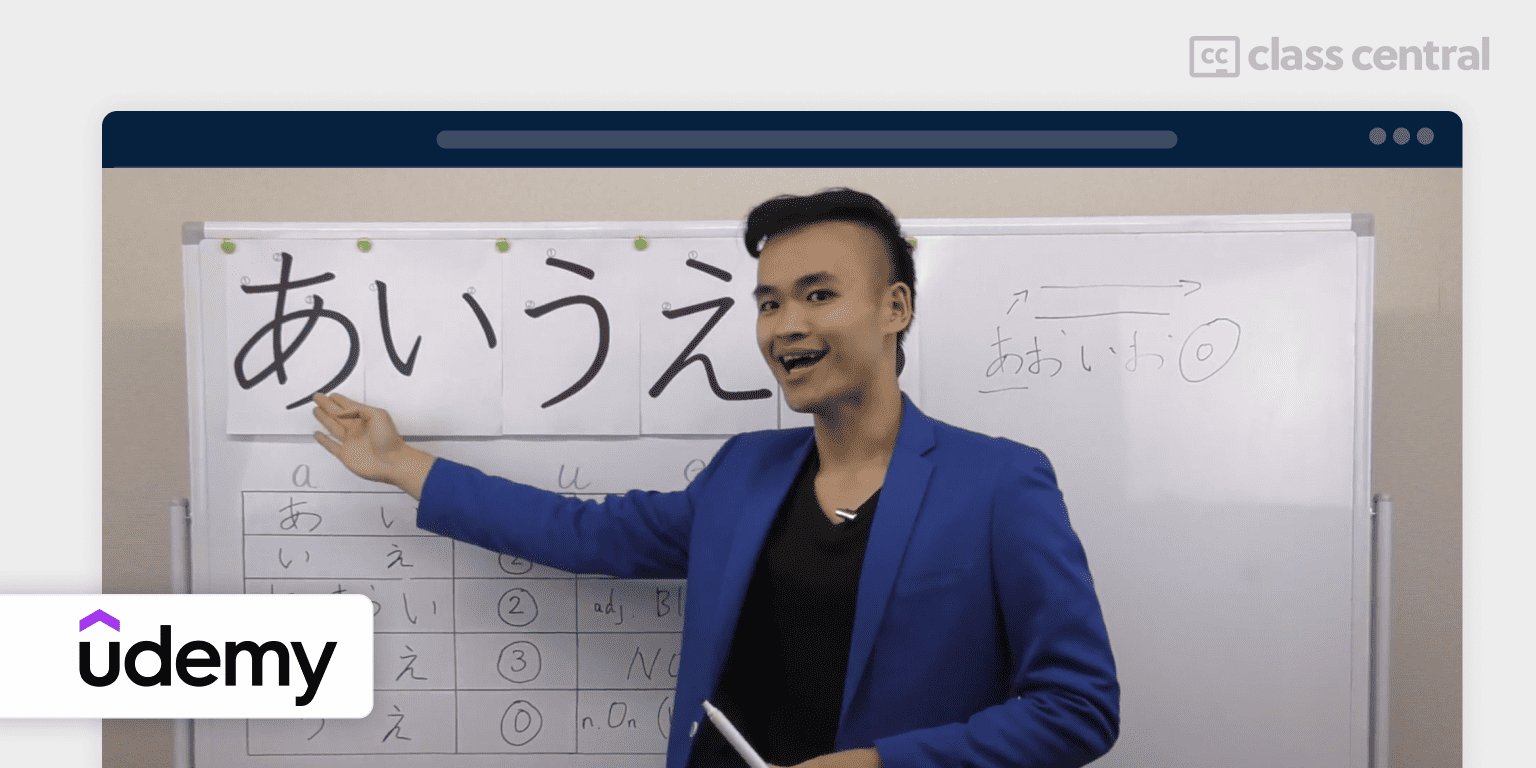10 Best Japanese Courses for 2024
Want to travel to Japan, start a new life there, or watch anime without subtitles? Here are the best free and paid online courses to learn Japanese.
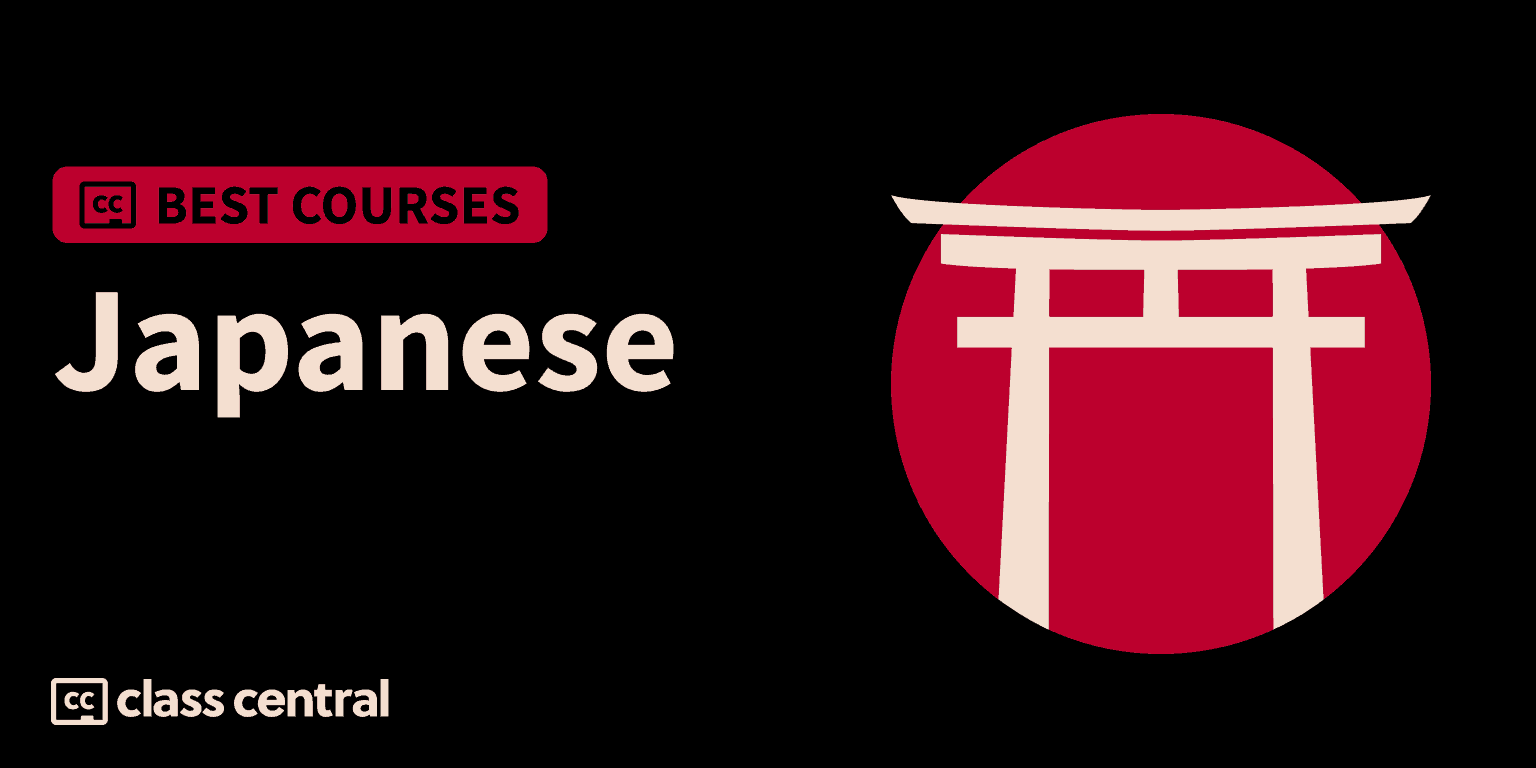
Ready to learn Japanese? Spoken by over 125 million native speakers, Japanese (日本語, Nihongo), the national language of Japan, belongs to the Japonic or Japanese-Ryukyuan language family and is rich in culture and history.
Understanding this language opens doors to a fascinating world. But where to start? In this Best Courses Guide (BCG), I’ve meticulously selected the 10 best Japanese courses just for you. From our catalog of over 40 Japanese courses and scouring the internet, I’ve got you covered with both free and paid options.
Click on the shortcuts for more details:
- Top Picks
- Hiragana, Katana, and Kanji
- Japanese Proficiency Test: JLPT
- Why are Japanese Skills Important?
- BCG Stats
- Why You Should Trust Us
- How We Made Our Picks and Tested Them
Here are our top picks
Hiragana, Katakana, and Kanji
The Japanese language uses three scripts: Hiragana, Katakana, and Kanji. Let’s take a quick look at each of them.
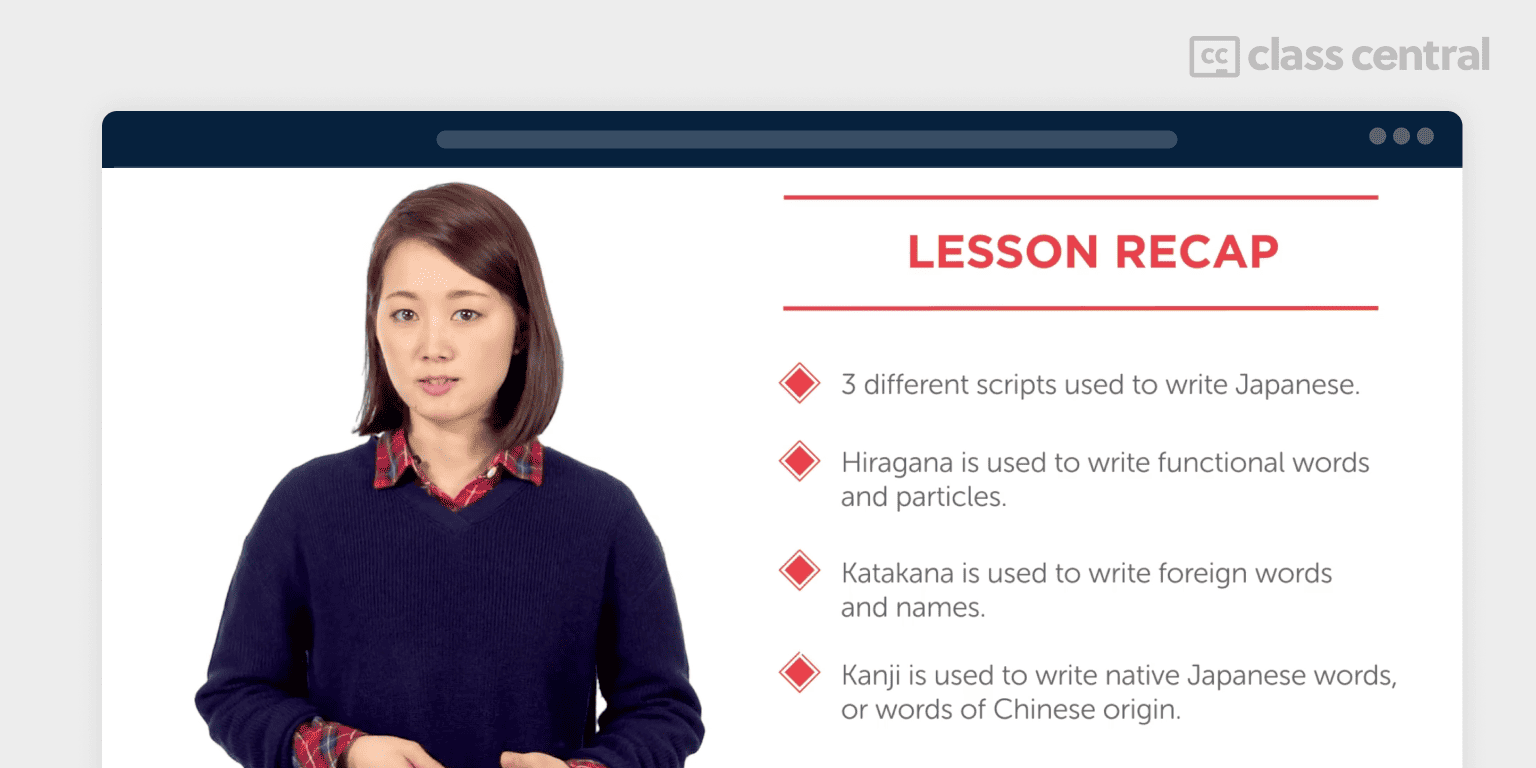
Hiragana is used to write functional words and particles. Hiragana is like the basic Japanese alphabet and consists of 46 characters.
Katakana is used to write foreign words and names. Katakana is similar to Hiragana, with 46 characters that are written slightly differently.
Kanji is used to write native Japanese words or words of Chinese origin. Kanji characters represent an idea or concept and act more like entire words than individual letters. There are over 2,000 Kanji characters!
Japanese Proficiency Test: JLPT
The Japanese-Language Proficiency Test (JLPT), offered by the Japan Foundation and Japan Educational Exchanges and Services, is the largest-scale Japanese-language test in the world. It is held worldwide to evaluate and certify proficiency in Japanese of non-native speakers. Language proficiency is tested on the basis of reading and listening, as well as vocabulary and grammar.
The JLPT has five levels, N1, N2, N3, N4 and N5, the level of difficulty increasing from N5 to N1. Below is a summary of the linguistic competence required for each level as described by JLPT.
| N1 | The ability to understand Japanese used in a variety of circumstances. |
| N2 | The ability to understand Japanese used in everyday situations, and in a variety of circumstances to a certain degree. |
| N3 | The ability to understand Japanese used in everyday situations to a certain degree. |
| N4 | The ability to understand basic Japanese. |
| N5 | The ability to understand some basic Japanese. |
Why are Japanese Skills Important?
Among the many reasons to learn Japanese, a few stand out: Being able to communicate with over 125 million native speakers (Japanese is the 8th most spoken language in the world), enjoying one of the most popular cultures in the world with its unique cuisine, music and movie industry, and most importantly, animes in their original language. These are more than enough reasons to convince any language aficionado to get started learning Japanese.
In addition to that, Japan is also known for its tech and automobile industry, bringing to the world a number of large Japanese companies (such as Nintendo, Toyota, Canon, Sony, etc.) that carry in their core a strong culture attached to Japan roots.
And lastly, if you want to open up to a number of opportunities as a Japanese translator or interpreter to your own language, there are hundreds of job openings on Indeed, Upwork and LinkedIn. You can also work as a language instructor or even diversify your reach as a tour guide and help Japanese travelers visiting your country.
Stats
- Combined, these courses have accrued over 197K enrollments.
- 5 courses are free or free-to-audit and 5 courses are paid.
- The most-represented course provider in the ranking is Udemy, with 5 courses.
- 8 courses are in English and 2 courses are in Japanese (subtitles available).
- The Japanese subject is followed by over 4.6K learners on Class Central, and accounts for over 40 courses in Class Central catalog.
Best Free Japanese Course for Complete Beginners (NHK WORLD-JAPAN)
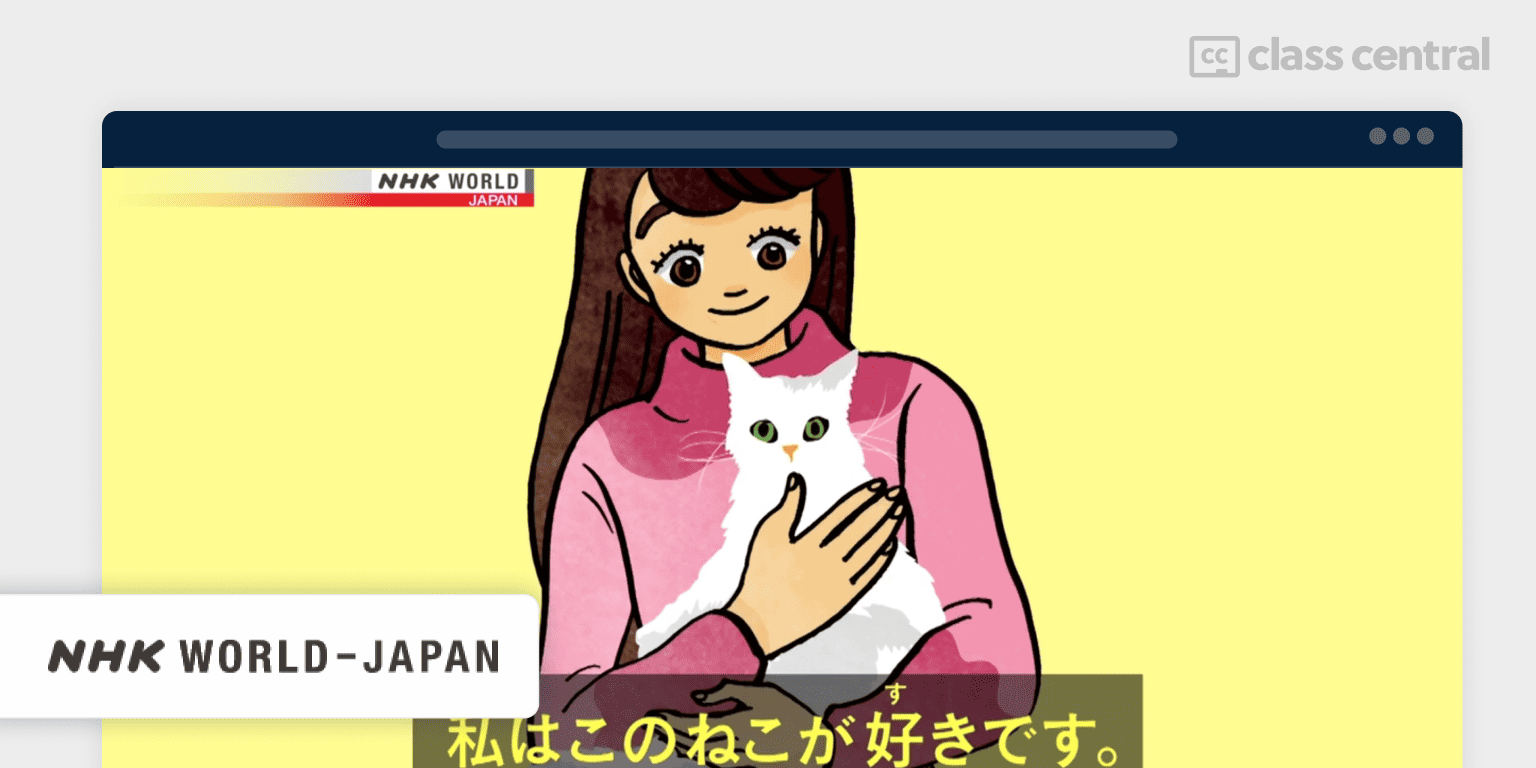
Easy Japanese | NHK WORLD-JAPAN is a free, 48-part series offered in 18 languages that teaches Japanese communication skills through fun conversations that form a story. There are 7 characters in this story who will help you learn handy and easy-to-use phrases for self-introductions, shopping, etc, as well as tourist information and Japanese culture and manners.
This series is designed for JFS A1-A2 level learners. A1 learners can understand basic expressions in everyday life and engage in very simple daily conversations. A2 learners can conduct simple daily conversations on familiar subjects.
You’ll learn:
- Basic Japanese phrases and vocabulary for everyday situations
- How to introduce yourself, ask for directions, and make purchases in Japanese
- Cultural insights through practical dialogues, enhancing your understanding of Japanese customs and practices
- Skills to navigate various scenarios in Japan, from dining out to traveling and working.
Each lesson includes a minute long conversation, 3-minute long video explanation, 10-minute long podcast, transcript for all audio-visual content, vocabulary, practice activities, interactive quiz, one kanji, culture and trip tips. You can track your progress as well.
NHK has a total of 10 Japanese courses from Elementary to Intermediate, you can check their full catalog here.
“This online Japanese course is a game-changer that turned learning into a joyful journey. Its practical and engaging lessons made rapid progress a reality, taking me from zero to conversational in no time. The course’s approach is brilliant and user-friendly, offering a treasure trove of knowledge. If you’re serious about mastering Japanese, this program is a must-try. It’s a remarkable experience that I can’t recommend enough.” – Anonymous.
| Institution | NHK WORLD-JAPAN |
| Hosts | Amy Ota, Eriko Kojima, Michael Rhys |
| Level | Beginner (JFS A1-A2) |
| Workload | 48 hours |
| Certificate | Not available |
Also Great Free Japanese Essential Lessons (JapanSocietyNYC)
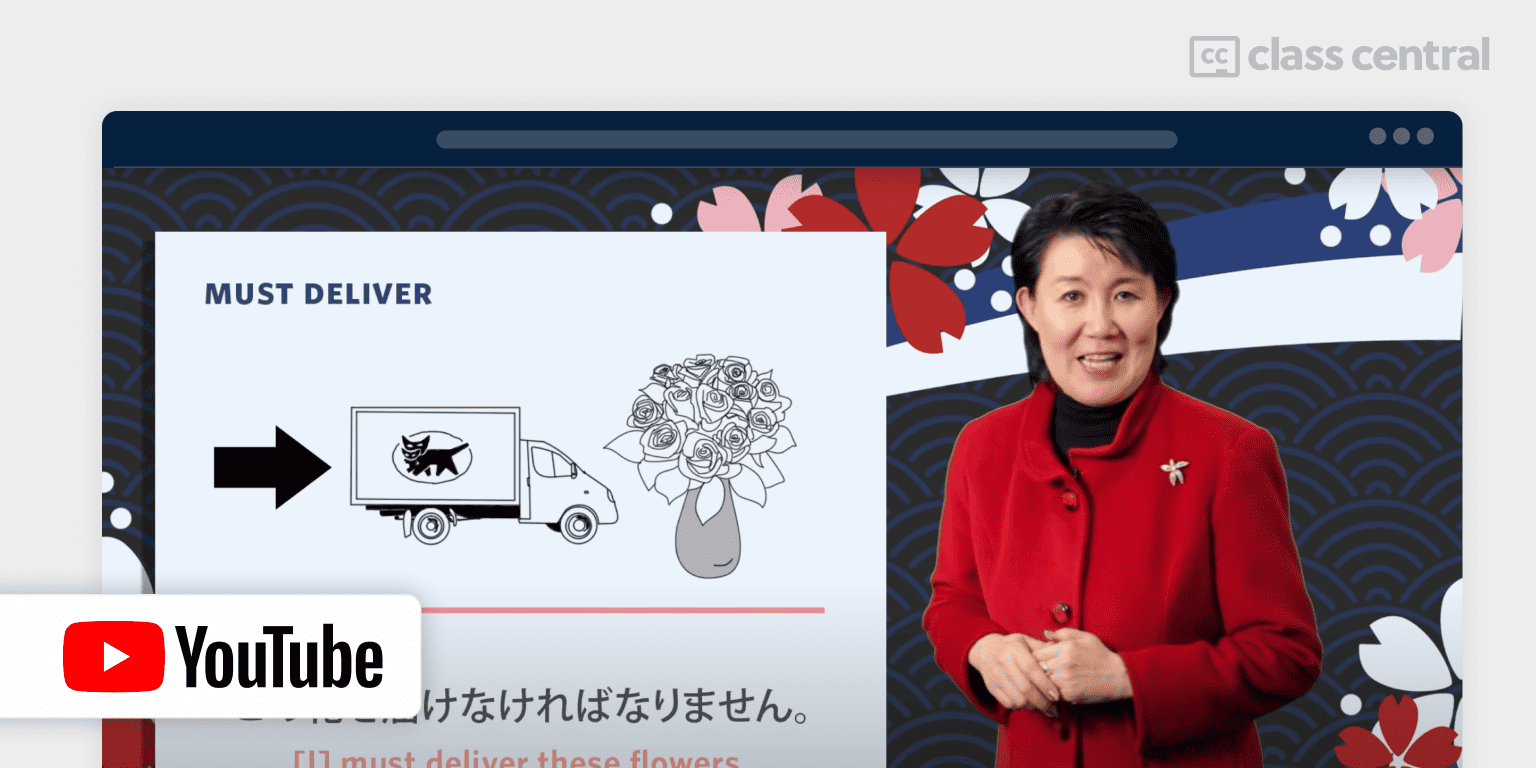
Japanese Language Lessons is the shortest course on this list. Provided by Japan Society’s Language Center, an established learning venue in New York City, this free course will teach you the basic elements of Japanese conversations such as words, simple phrases, basic grammar, sentence connections, and much more with an interactive instructor (pause and wait strategy).
What you’ll gain:
- Mastery of basic Japanese vocabulary and phrases, including numbers, days, and family members
- Understanding and usage of essential verbs and their conjugations
- Skills to form simple to complex sentences, including asking questions and expressing likes or dislikes
- Knowledge of the te-form and nai-form for more nuanced communication
- Confidence in basic conversational Japanese, including making invitations and expressing permissions or prohibitions.
| Channel | JapanSocietyNYC |
| Provider | YouTube |
| Level | Beginner |
| Workload | 2-3 hours |
| Views | 4.3M |
| Certificate | Not available |
Best Beginners Japanese Course for Travellers (Udemy)
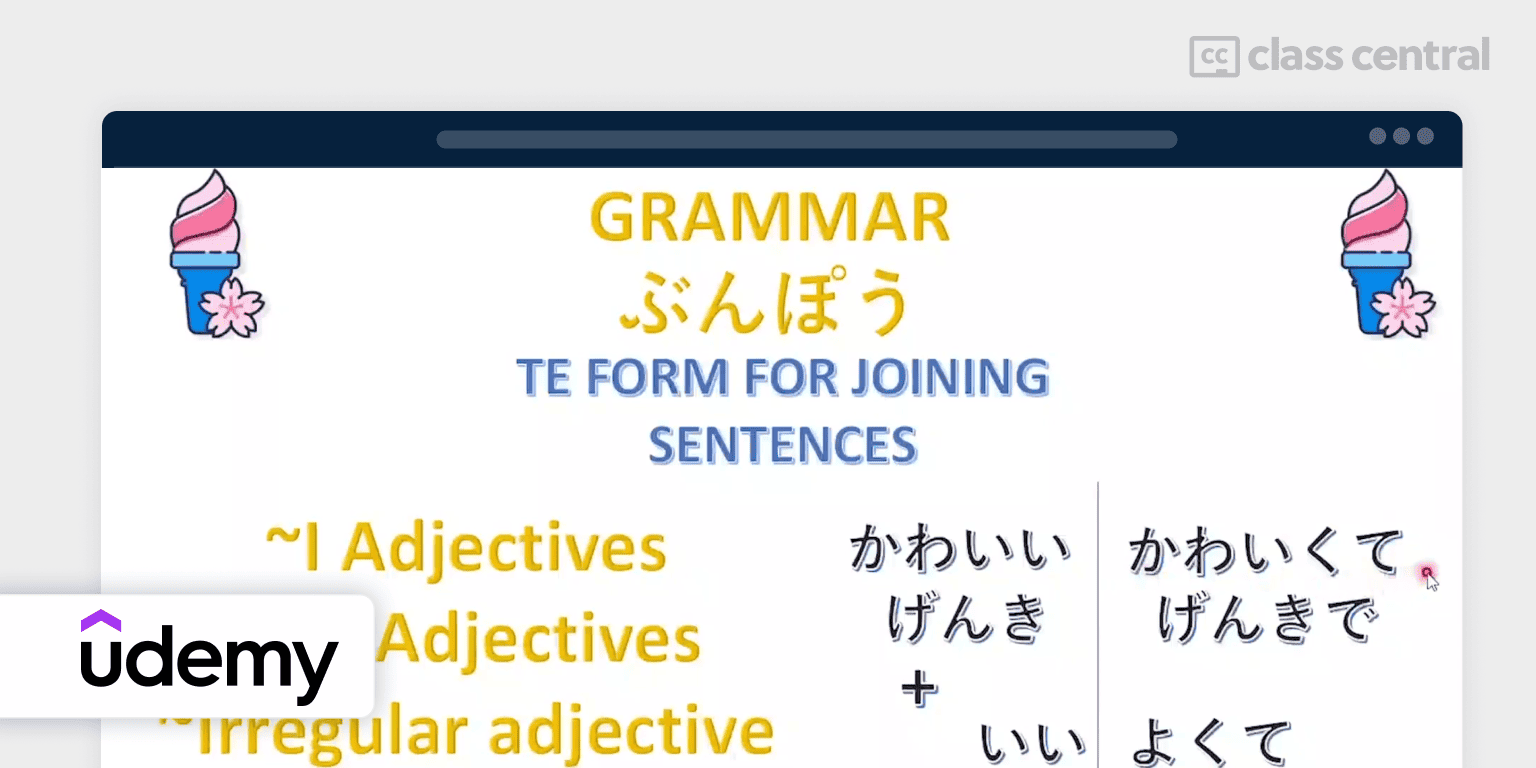
If it’s your dream to travel to Japan and communicate with the locals, then this comprehensive course is for you! Complete Japanese Course: Learn Japanese for Beginners is packed with elaborate lessons and lots of practice opportunities — you’ll master the basics of Japanese fast. By the end of this course, you’ll be able to pronounce words correctly, structure basic sentences, and make daily conversations with ease.
What learner will gain:
- Mastery of over 500 essential vocabulary words and useful everyday phrases
- Ability to read, write, and pronounce Japanese words correctly
- Skills to construct basic sentences and understand Japanese grammar
- Confidence to introduce yourself, order food, navigate public transport, and handle everyday situations in Japanese
- Insights into Japanese culture and the subtle nuances of the language.
| Provider | Udemy |
| Level | Beginner |
| Workload | 50 hours |
| Enrollments | 88K |
| Rating | 4.7/5.0 (2K) |
| Certificate | Paid |
Also Great Beginners Course for Travellers (Udemy)
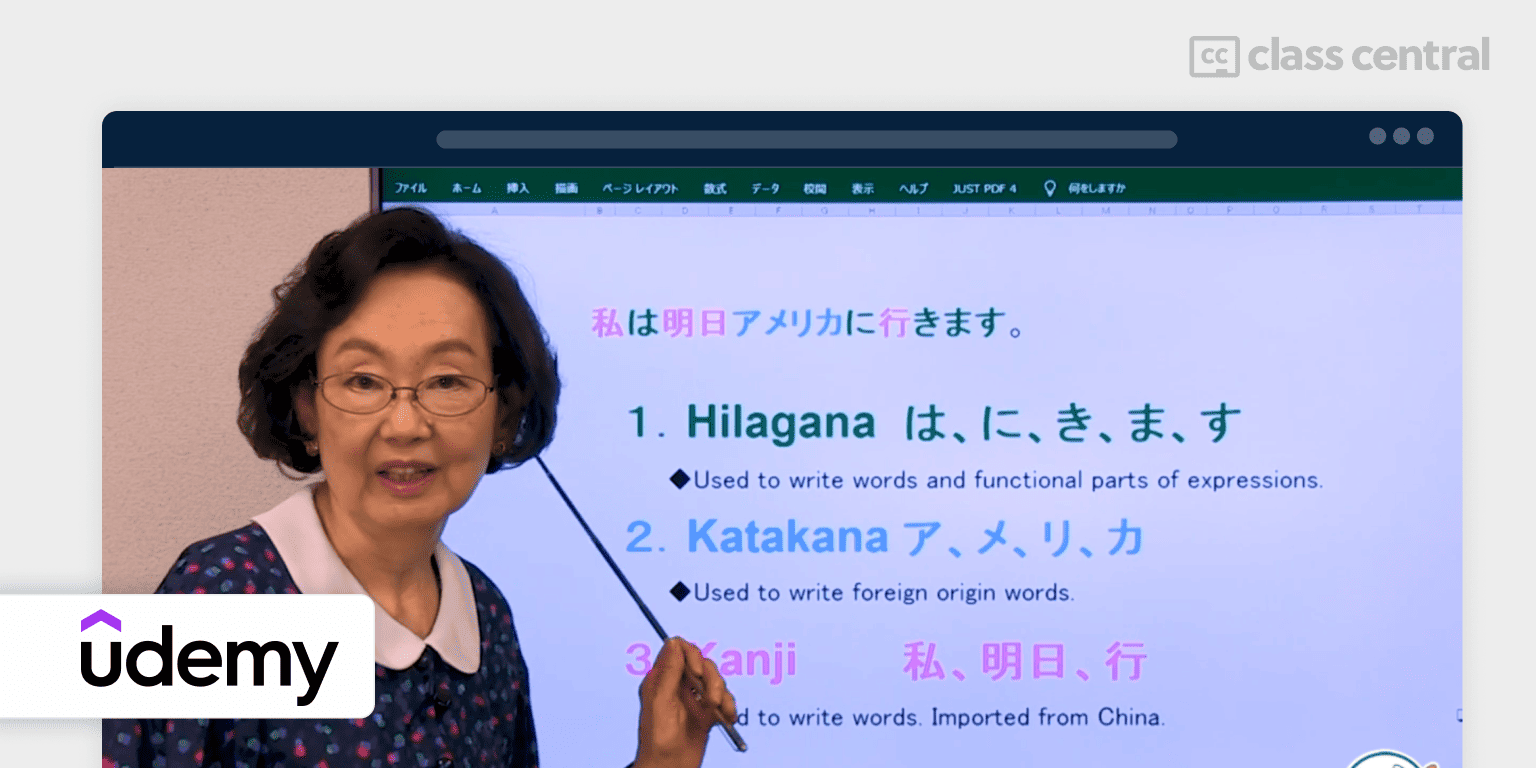
Another fairly comprehensive course on this list, Japanese for beginners based on MISJ WELCOME PROGRAM, is ideal for beginners with no prior experience in Japanese. It’s designed around the MISJ (Mikiko Iwasaki’s Systematic Japanese) WELCOME PROGRAM, providing a semi-private lesson experience led by Mikiko Iwasaki, an instructor with over 35 years of teaching experience both in Japan and internationally.
Whether you’re planning to visit Japan or start your life there, this course will help you gain enough Japanese speaking, reading and writing abilities. You’ll get to learn from a very experienced Japanese instructor and practice with quizzes.
In this course, you will:
- Learn basic Japanese pronunciation, writing, and reading of Hiragana and Katakana
- Gain essential grammar knowledge for creative speech and writing
- Develop practical conversation skills for daily situations
- Understand the cultural background necessary for good relationships in Japan.
“This teacher is very good at using immersion methods in English for beginner students. I have been able to memorize hiragana and katakana much more efficiently and I have been studying Japanese for years ! I recommend her to anybody wanting to learn Japanese.” – Victoria C., Udemy learner
| Provider | Udemy |
| Instructor | Mikiko Iwasaki |
| Level | Beginner |
| Workload | 28 hours |
| Enrollments | 8.3K |
| Rating | 4.7/5.0 (193) |
| Certificate | Paid |
Best Japanese Grammar Course for Beginners (Udemy)
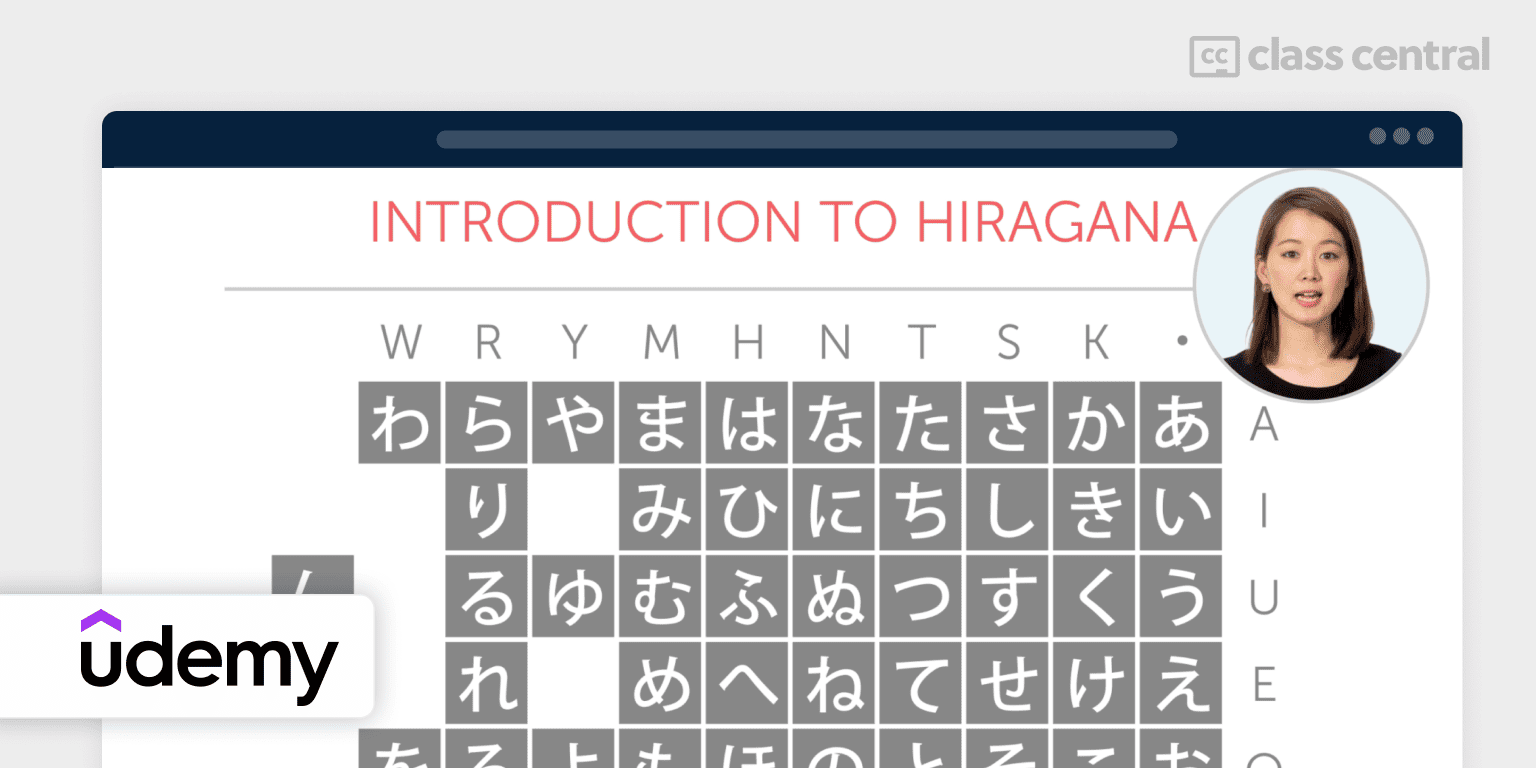
Learn Japanese for Beginners: The Ultimate 100-Lesson Course will give you step by step guidance on speaking, writing and understanding Japanese. Moreover, you’ll be able to sound more like a native with pronunciation lessons, and also acquire Japanese listening comprehension skills. Quizzes after each lesson test your understanding.
What you’ll learn:
- Introduction to Japanese: Grammar, writing and phrases.
- How to Write in Japanese: Hiragana and Katakana characters and how to write them.
- Ultimate Japanese Pronunciation Guide: Perfect Japanese pronunciation, common mistakes and how to avoid them, and nuances of natives.
- Basic Japanese: Common vocabulary and phrases, useful conversational phrases, and the basics of Japanese.
- 40 Japanese Listening Comprehension Lessons
| Provider | Udemy |
| Instructor | Alisha, Risa |
| Level | Beginner |
| Workload | 8 hours |
| Enrollments | 39K |
| Rating | 4.6/5.0 (5.9K) |
| Certificate | Paid |
Also Great Grammar Course for Complete Beginners (Udemy)
As the name suggests, Japanese Course for Absolute Beginners (Letters, Alphabet) is made for absolute beginners starting out with Japanese learning. This course is designed to teach you Hiragana and Katakana, as well as make basic conversations in Japanese. You’ll build a strong foundation in elementary Japanese, use common everyday Japanese phrases, and learn about Japanese culture.
What you’ll gain:
- Mastery of Hiragana and Katakana, the foundational Japanese characters
- A deep understanding of the Japanese writing system
- Improved pronunciation and intonation in Japanese
- Knowledge of common phrases for daily greetings
- Insight into Japanese culture and daily life through dedicated culture note sessions.
| Provider | Udemy |
| Instructor | Alston |
| Level | Beginner |
| Workload | 6 hours |
| Enrollments | 38K |
| Rating | 4.6/5.0 (2.2K) |
| Certificate | Paid |
Best Course for Basic Business Japanese – JLPT N5 (Udemy)
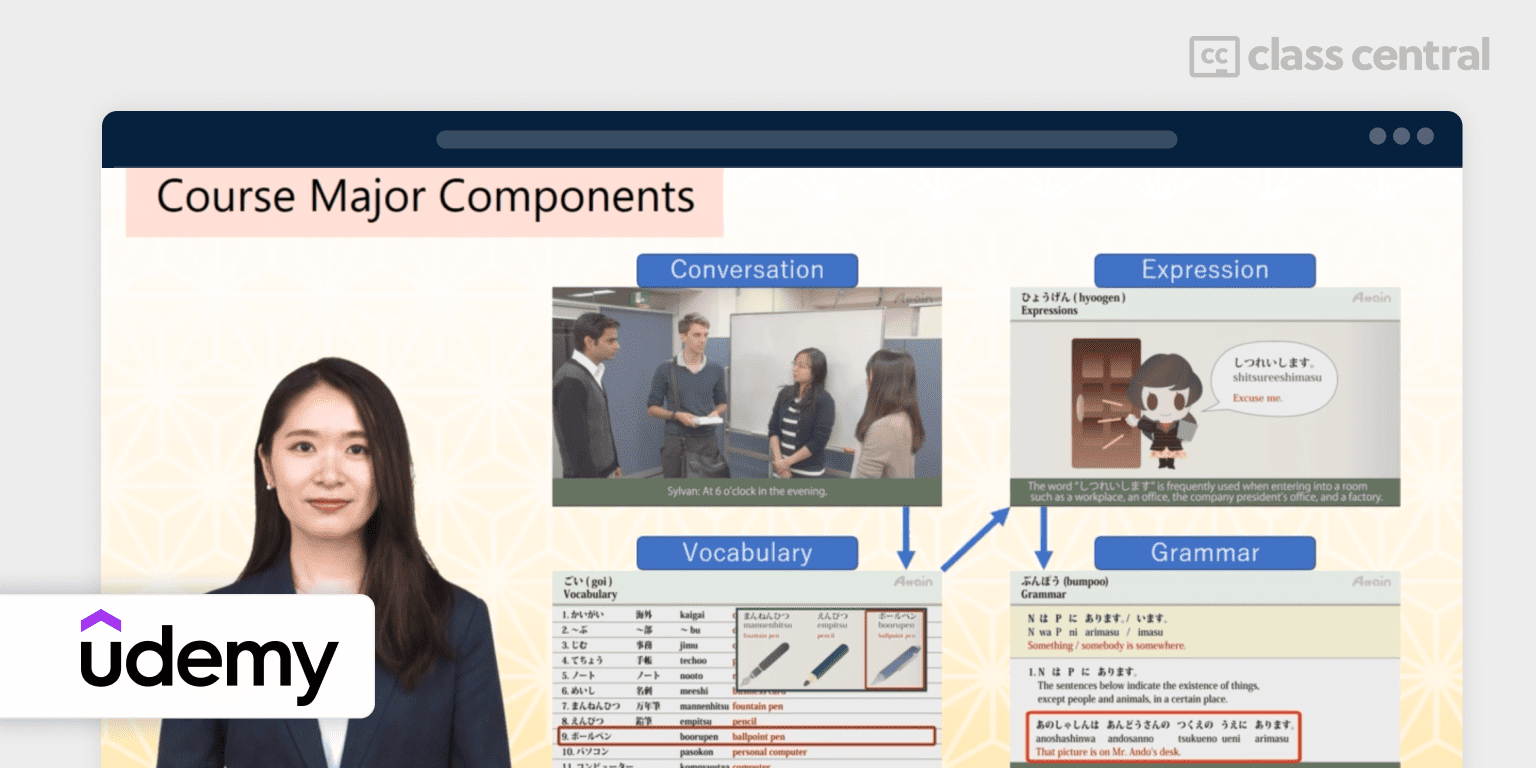
The JLPT N5 is the most basic level of the Japanese Language Proficiency Test (JLPT), including fundamental vocabulary and grammar suitable for everyday situations but limited in some business contexts. It allows for basic reading, writing, listening, and speaking skills, but more advanced proficiency (N3 and above) is typically needed for effective communication in Japanese business environments.
Online Japanese N5 Course(All 15 lessons) is a comprehensive course that will teach you JLPT N5 level vocabulary, expressions, grammar and entry-level business Japanese. There’s also a generous number of practice quizzes throughout the course. By the end of this course you’ll be able to comprehend Hiragana and Katakana, as well as read common phrases and sentences written in N5 level Kanji.
This course is taught entirely in Japanese, but English subtitles and translations are provided.
What you’ll gain:
- Mastery of basic Japanese writing, pronunciation, vocabulary, expressions, and grammar at the JLPT N5 level
- Ability to use basic greetings and engage in short, simple conversations in daily life
- Comprehension of hiragana, katakana, and N5 level kanji, enabling the reading of common phrases and sentences
- Preparation for advancing Japanese language proficiency, acquiring JLPT N5 qualifications, and understanding entry-level business Japanese.
| Provider | Udemy |
| Institution | Attain Online Japanese Language School |
| Instructor | Ando |
| Level | Beginner |
| Workload | 21 hours |
| Enrollments | 56K |
| Rating | 4.6/5.0 (8K) |
| Certificate | Paid |
Best Free JLPT N5 Course (Japanese Ammo with Misa)
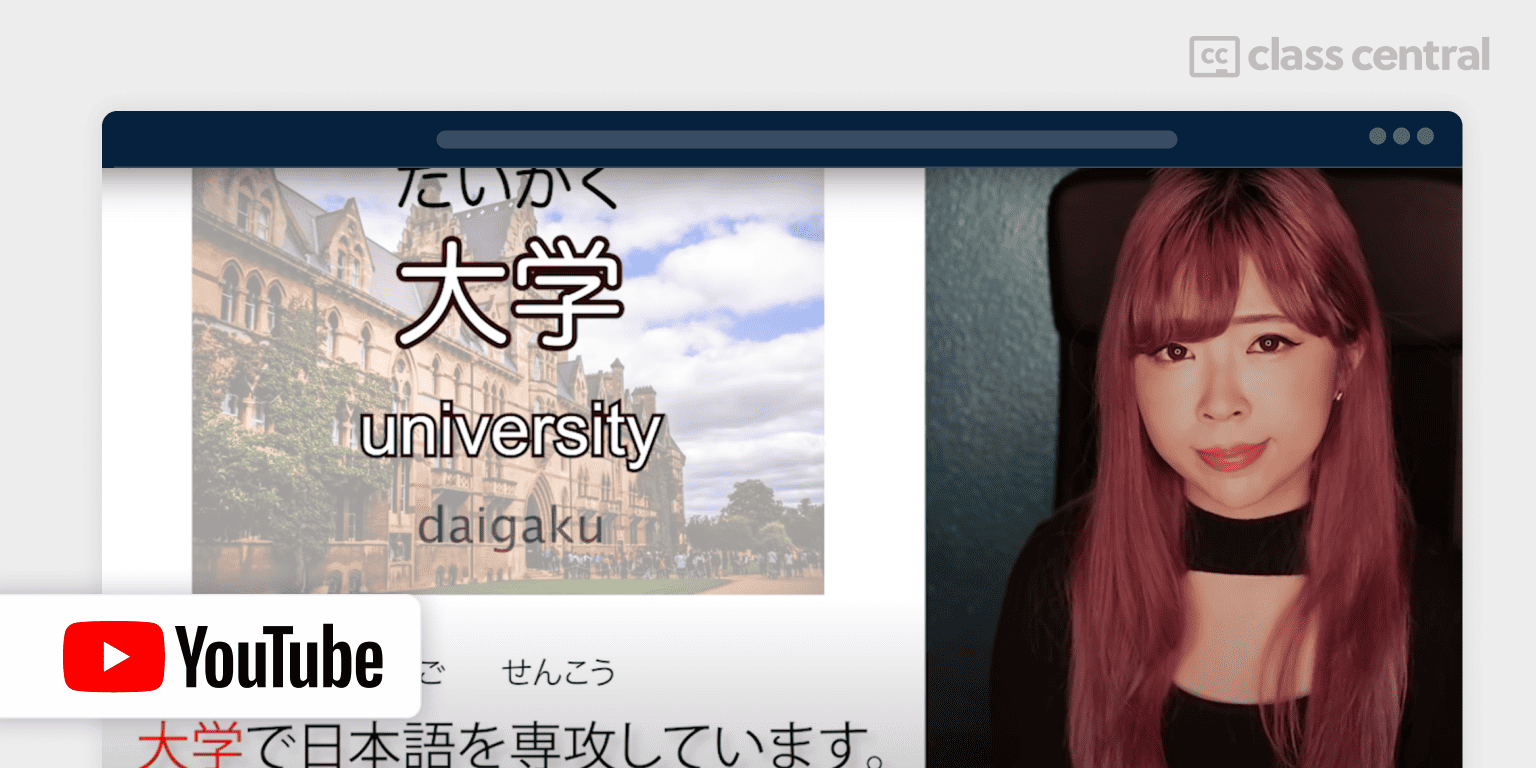
JLPT N5 is a free course that will help you get started and learn the necessary grammar and vocabulary for JLPT N5.
Misa is an enthusiastic multilingual ninja, eager translator, manga lover, and happy world traveler! You can check out her website for more free Japanese lessons.
You will:
- Master essential Japanese grammar, including adjective conjugation, verb forms, and expressing desires or plans
- Learn to give advice, compare objects, and discuss possession in Japanese
- Understand the use of particles and the differences between similar expressions
- Expand your vocabulary with everyday action verbs and must-know places
- Prepare for the JLPT N5 with a comprehensive practice test covering vocab, kanji, and grammar.
| Channel | Japanese Ammo with Misa |
| Provider | YouTube |
| Instructor | Misa |
| Level | Beginner |
| Workload | 10-12 hours |
| Views | 260K |
| Certificate | Not available |
Best Free JLPT N1 Course (日本語の森)
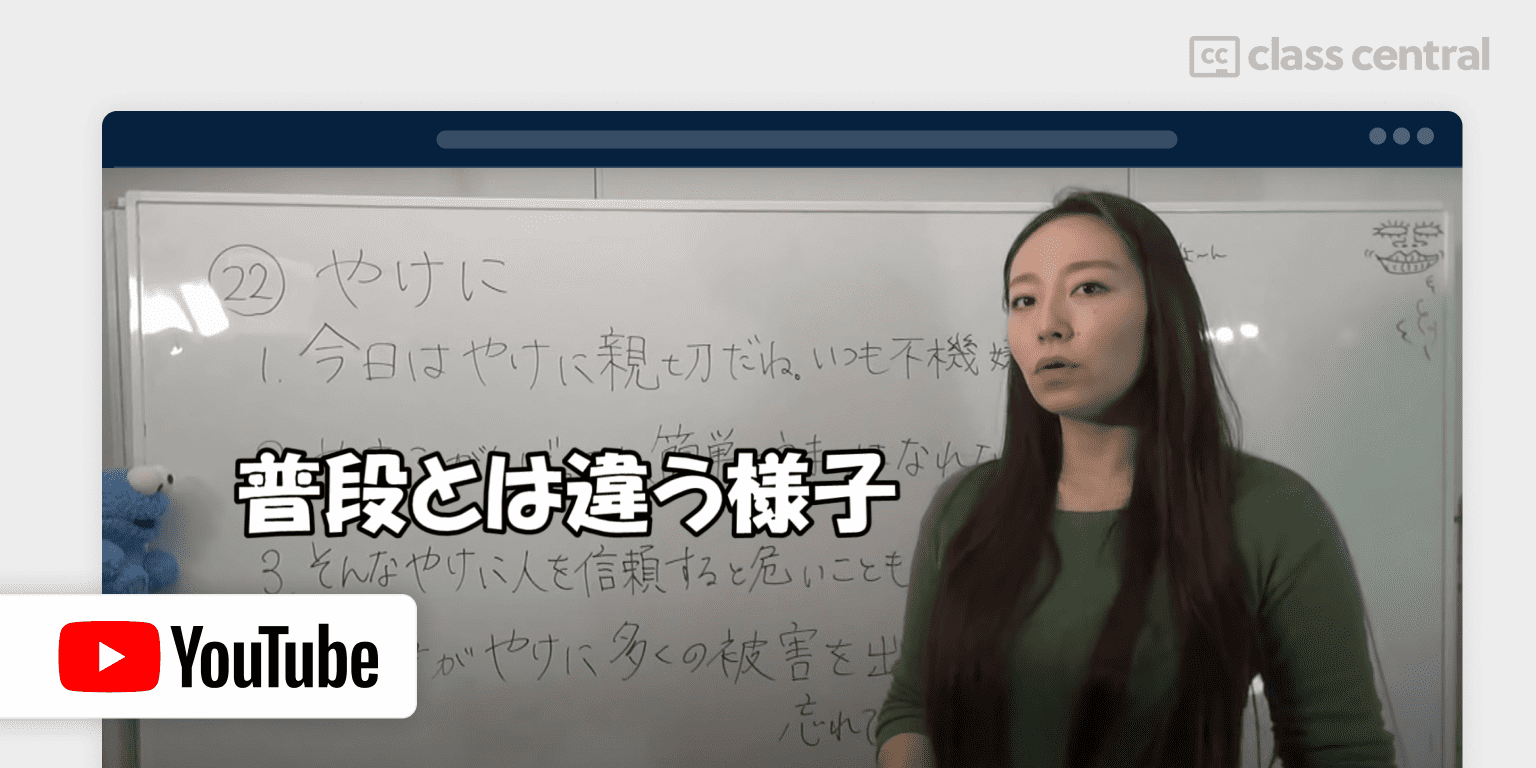
If you’re already quite skilled in Japanese and want to take it to the final JLPT N1 level, then this free course is for you: N1文字語彙 vocabulary for JLPT (日本語の森. Even though this course is fairly short, it will teach you the vocabulary needed for JLPT N1. Within a matter of a couple of hours, you’d have improved your Japanese vocabulary for JLPT N1 with a fun instructor.
| Channel | 日本語の森 |
| Provider | YouTube |
| Instructor | Noriko |
| Level | Advanced |
| Workload | 3-4 hours |
| Views | 122K |
| Certificate | Not available |
Podcasts, Community, Blogs and Japanese Lessons (Nihongo Master)
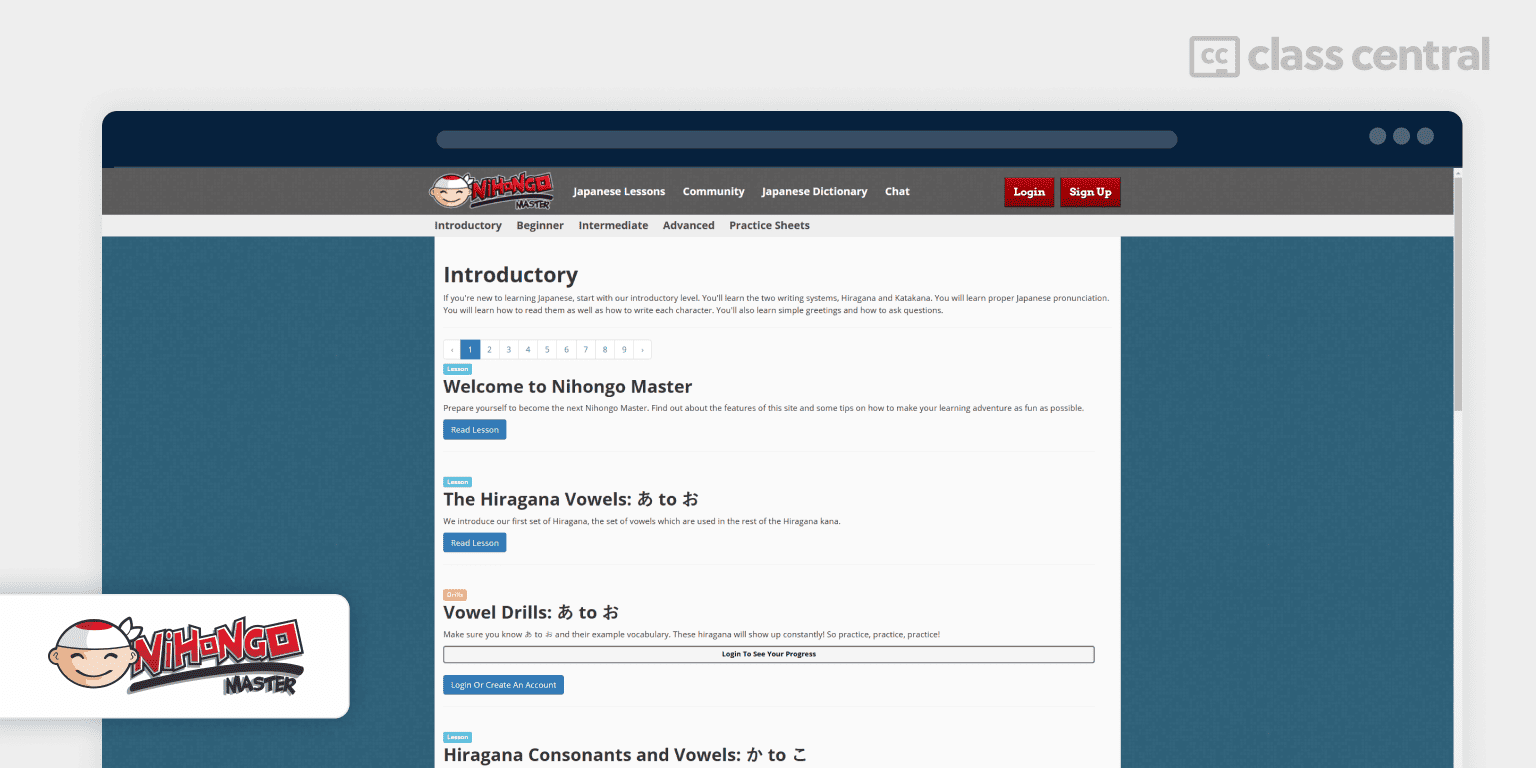
Nihongo Master is a great platform where you can find free podcasts, community, blogs, dictionary and paid lessons for learning Japanese. This site will help you read, write and speak Japanese at a very low cost. Once you’ve subscribed, you’ll get access to hundreds of Japanese lessons, quizzes, and tools to help you get started with Japanese.
There are four difficulty levels that you’ll progress through:
- Introductory – Read and write Hiragana and Katakana, proper Japanese pronunciation, simple greetings, how to ask questions
- Beginner – Basics of Japanese grammar, write common Kanji, more Japanese vocabulary, read simple Japanese text
- Intermediate – More Japanese grammar rules, use Japanese in regular conversation, more than 800 Japanese words and over 200 Kanji
- Advanced – Improve Japanese fluency, advanced grammar rules, 5000 words and over 2000 Kanji, read, speak and write Japanese in most situations
| Institution | Nihongo Master |
| Level | Mixed |
| Enrollments | > 50K |
| Certificate | Not Available |
Why You Should Trust Us
Class Central, a Tripadvisor for online education, has helped 60 million learners find their next course. We’ve been combing through online education for more than a decade to aggregate a catalog of 200,000 online courses and 200,000 reviews written by our users. And we’re online learners ourselves: combined, the Class Central team has completed over 400 online courses, including online degrees.
I (Archisha) have learned a bit of Japanese mainly from anime, J-pop, and Japanese movies. As my interest grew, I started learning more about Japan in general, so I became familiar with how Japanese actually works in the real world. Hearing real people talk gave me more enthusiasm to learn the language and explore the country as well.
I am also a Guided Project Instructor and a Beta Tester at Coursera, having tested many courses before they’re officially launched. I have taken over 50 online courses in various subjects.
My experience as an online learner and teacher has given me some perspective on what to look for in an online course. I used my experience to evaluate each course in this list.
How We Made Our Picks and Tested Them
Trying to find “the best” can be daunting, even for those of us who live and breathe online courses. Here’s how I approached this task.
First, I combed through Class Central’s Catalog and the internet to find a variety of free and paid open courses, some with certificates. You don’t need to enroll in a university to learn Japanese.
When choosing courses, I considered the following factors:
- Renowned Institutions: I looked for recognized institutions in Japanese language learning.
- Instructor experience: I sought instructors with extensive experience in teaching Japanese and engaging presentation styles
- Popularity: I checked numbers of enrollments and views to find popular courses
- Course content: I examined courses that covered a range of topics and presentation styles, including the basics and more advanced topics. I watched some course videos to sample courses I hadn’t already taken
- Learner reviews: I read learner reviews (when available) to get a sense of the quality of each course, leveraging the Class Central database with its thousands of course ratings and reviews written by our users as well as available course provider reviews.
- Then, I defined the scope for these recommendations. A Japanese course can cover various topics, so I chose top courses from a range of sub-fields.
Ultimately, I used a combination of data and my own judgment to make these picks. I’m confident these recommendations will be a reliable way to learn Japanese.
Fabio has revised the research and the latest version of this article.
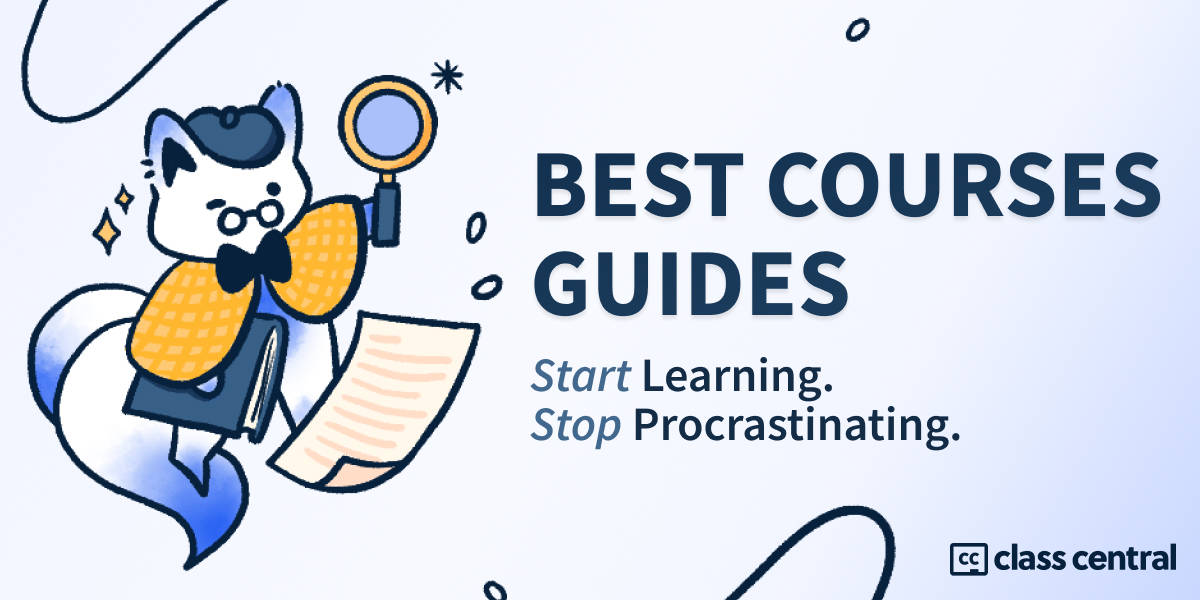

Archisha Bhar



